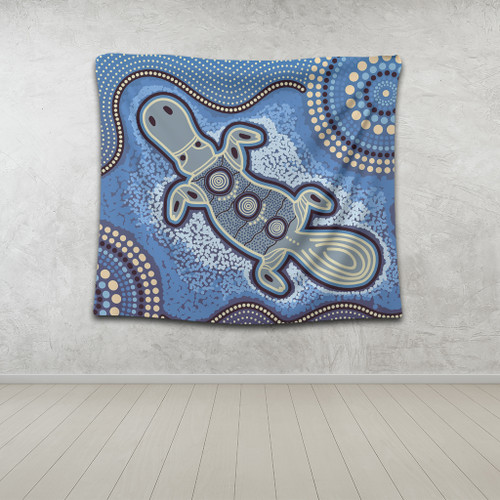A Tapestry of Tongues: Exploring the Languages of Australia
A Tapestry of Tongues: Exploring the Languages of Australia

Australia, a land of diverse landscapes and vibrant cultures, is also home to a fascinating array of languages. Beyond the dominant English, a rich tapestry of Indigenous languages weaves through the country’s history, revealing the stories, beliefs, and traditions of its original inhabitants. This article delves into the linguistic landscape of Australia, exploring the history, diversity, and current status of its languages.
The Legacy of Indigenous Languages:
Related Articles: A Tapestry of Tongues: Exploring the Languages of Australia
- Aboriginal Facial FeaturesTitle
- A Taste Of Paradise: Exploring The Diverse And Delicious Fruits Of Australia
- A Tapestry Of Connection: How Aboriginal Peoples Used The Land
- A Journey Through Meaning: Exploring Indigenous Male Adult Names
- Unmasking The Ancient Ties: A Journey Through The Tamil Nadu Tribal Connection To Australian Indigenous Communities
Australia’s Indigenous languages are among the oldest and most diverse in the world, with estimates suggesting over 250 distinct languages spoken before European colonization. These languages represent a unique cultural heritage, passed down through generations through oral traditions, songs, and stories. They are deeply intertwined with the land, reflecting the intimate connection Indigenous Australians have with their environment.
A History of Dispossession:
The arrival of European settlers in the 18th century brought with it a devastating impact on Indigenous languages. Policies of assimilation and forced removal from traditional lands led to a dramatic decline in language transmission. The Stolen Generations, children forcibly removed from their families, were often prohibited from speaking their native tongues, contributing to the loss of cultural knowledge and identity.
The Fight for Survival:
Despite the challenges, Indigenous languages are showing signs of resilience. A growing awareness of the importance of language preservation has led to a surge in revitalization efforts. Communities are working tirelessly to document, teach, and revive their languages, ensuring that these vital cultural treasures are passed on to future generations.
The Diversity of Indigenous Languages:
Australia’s Indigenous languages exhibit a remarkable diversity, reflecting the vast geographical expanse and cultural richness of the continent. From the complex grammar of the Yolŋu languages in the Northern Territory to the intricate tonal system of the Dyirbal language in Queensland, each language holds unique linguistic features and cultural significance.
English as the Dominant Language:

While Indigenous languages are a vital part of Australian culture, English serves as the dominant language in the country. It was introduced by European settlers and has become the primary language of communication, education, and government. This dominance has influenced the development of Australian English, a unique dialect with its own vocabulary, pronunciation, and slang.
The Role of Language in Reconciliation:
The recognition and preservation of Indigenous languages are crucial for reconciliation between Indigenous and non-Indigenous Australians. By acknowledging the history of dispossession and supporting language revitalization efforts, the country can move towards a more inclusive and equitable society.
Beyond English and Indigenous Languages:
While English and Indigenous languages are the most prominent, Australia is also home to a variety of other languages spoken by immigrants and migrant communities. This linguistic diversity adds to the richness and complexity of the Australian cultural landscape.

The Future of Languages in Australia:
The future of languages in Australia is intertwined with the country’s commitment to cultural diversity and reconciliation. Continued support for language revitalization programs, educational initiatives, and community engagement is essential to ensure that the rich linguistic heritage of Australia is preserved and celebrated.
FAQ about Languages of Australia:
Q: How many Indigenous languages were spoken in Australia before European colonization?
A: Estimates suggest over 250 distinct Indigenous languages were spoken in Australia before European colonization.

Q: What is the current status of Indigenous languages in Australia?
A: While many Indigenous languages are endangered, there is a growing movement to revitalize and preserve them.
Q: What is the most widely spoken Indigenous language in Australia?
A: There is no single most widely spoken Indigenous language, as many are spoken by relatively small communities.
Q: How is the Australian government supporting language revitalization efforts?
A: The Australian government has implemented various programs and initiatives to support Indigenous language revitalization, including funding for language documentation, education, and community-based programs.
Q: What is the significance of language preservation for Indigenous communities?
A: Language preservation is essential for maintaining cultural identity, transmitting knowledge, and ensuring the continuity of Indigenous traditions.
Q: How can non-Indigenous Australians contribute to language revitalization?
A: Non-Indigenous Australians can contribute by supporting language programs, learning about Indigenous languages and cultures, and advocating for policies that promote language preservation.
Conclusion:
The languages of Australia represent a rich tapestry of cultural heritage, history, and diversity. From the ancient tongues of Indigenous Australians to the vibrant mix of languages spoken by immigrant communities, the country’s linguistic landscape reflects its unique identity. By embracing and supporting the preservation of all languages, Australia can foster a more inclusive and culturally vibrant society.

Closure
Thus, we hope this article has provided valuable insights into A Tapestry of Tongues: Exploring the Languages of Australia. We hope you find this article informative and beneficial. See you in our next article!


